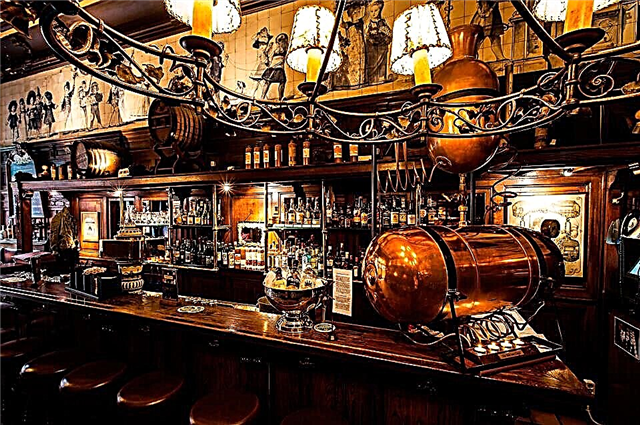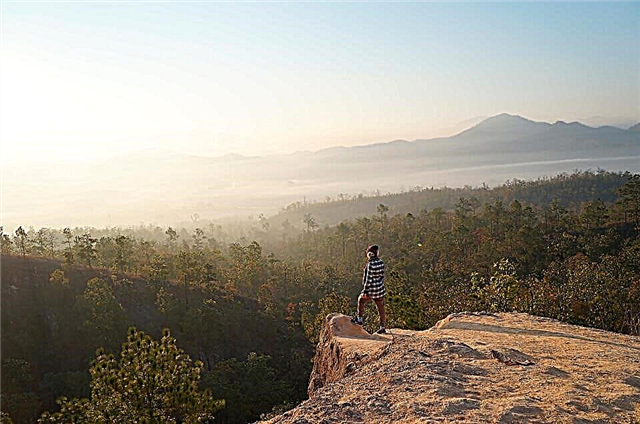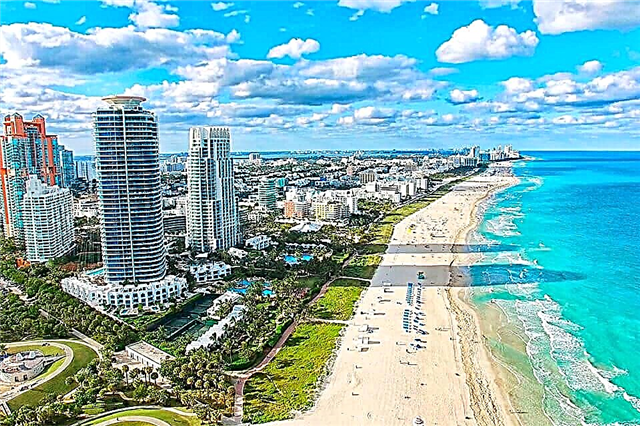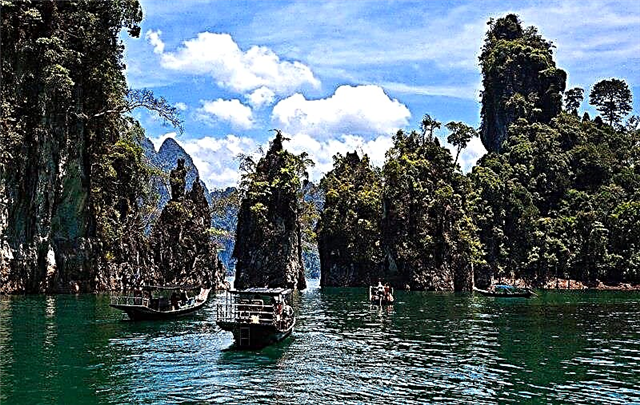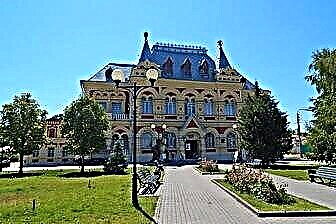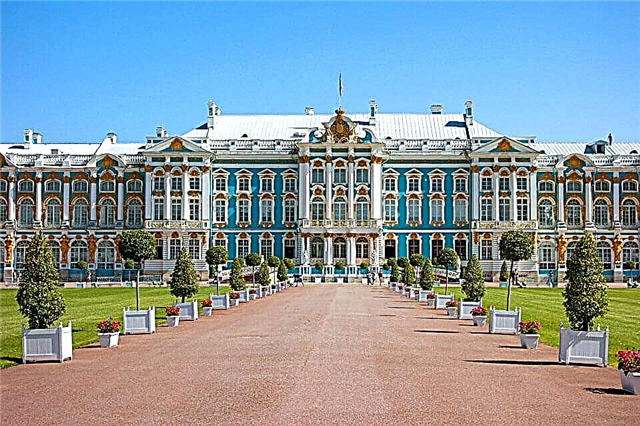Travel to St. Petersburg is determined by the desire to see its sights, walk along Nevsky Prospekt, look at the Neva, tamed by reliable embankments, admire the opening of bridges and a night walk around the city. Among the popular and important places is the Tsarskoye Selo Museum Reserve.
It includes Ekaterininsky, Alexandrovsky, Babolovsky parks with their palaces and pavilions. The area of the museum is about 300 hectares with the number of architectural structures over 100. Walking around historical sites, it is proposed to get acquainted with the life of Catherine I, the Romanovs, Nicholas II, Alexandra Feodorovna.
Each of the royal persons left their mark on the appearance of Tsarskoye Selo. Among the magnificent palaces and parks, the Great Pushkin drew inspiration. Here he completed the work "Eugene Onegin".
History

The first mention of Tsarskoe Selo dates back to 1502 (under the name Saritsa). During the period of transition of the territory to Russia, the area was called Sarskaya Manor and since 1711, after the announcement of Catherine as the "True Empress" of Russia, a palace-type residence was formed here. The most august names loved entertainment.
Their rich fantasies carried them to the fabulous world of the East, the ancient cities of Europe and other parts of the planet. Buildings with exotic names appeared: Chinese or Creaky Gazebo, Gothic Gate, Pyramid, Turkish Baths, Hanging Gardens, Marble Bridge, masterpieces of Baroque and Classicism styles.
The center of the exposition diversity of the park is the Catherine Palace with the famous Amber Room, the "Golden Enfilade" of luxurious halls. The Museum houses 36505 elements, combined into interesting collections.
Among them, the following collections have a special price:
- the Amber Room
- Paintings of the 17th-18th centuries
- Collection of types of military uniforms
- Furniture of the Lyon Hall of the Catherine Palace
- Cameron's gallery with objects of bronze sculpture
- Imperial Palaces Libraries
- Famous bridges in the parks of the museum
What to watch

Tsarskoe Selo is visited by a huge number of tourists every year. There are optimal excursion routes, capturing a large number of interesting places of the Museum. Photography is allowed on the territory of the museum (except for the Amber Room). The beginning of a fascinating journey into the past of our Motherland begins with the palace of Catherine.
Catherine Palace

The history of the life of the three great queens (Catherine I, Elizabeth Petrovna, Catherine II) is preserved by the architectural masterpieces of the World Heritage Site, created by the best masters of three eras from the life of the Russian State.
In the period from 1744 to the present time, restorations and additions took place in the palace. In 2003, the Amber Room returned to its original place, restored according to the surviving samples. The modern image of the palace has been preserved in accordance with the view during the reign of Elizabeth Petrovna.
At the moment of opening, the azure facade of the palace, snow-white columns, five solemn church domes, a spire with a golden star, sparkled with gilded ornaments. To create such beauty, 100 kg of gold were used.
The inner chambers, located one after another in the form of a ceremonial suite, were furnished by the famous Rastrelli. Figures of Atlanteans, moldings are made according to the ideas of the sculptor Dunker. Many of the cabinets were carried out under the direction of the Scottish architect Cameron.
During the last major reconstruction of the palace (architect Monighetti in 1863) a marble staircase appeared. During the war, 53 halls of the palace were plundered. 32 rooms have been restored. Do not count the flow of people going to see the Amber Room. Its panels were restored in the Tsarskoye Selo amber workshop after 20 years of painstaking work.
Catherine park

Together with the appearance of the palace building, a green recreation area was built around it. Under the leadership of Rastrelli, the buildings "Hall on the Island", located in the center of the Big Pond, "Grotto", "Hermitage" appeared. All trends in garden art of the second half of the 18th century were reflected in the arrangement of the landscape style of the park. Linden alleys were planted along the Big Pond. Such an alley, called Rampova, has grown on a hill above the pond, as a continuation of the Russian Roller Coaster.
The Chesme Column, the Cahul Obelisk, the Small Shooting Column, and the Ruin Tower have appeared in different parts of the park. Hermitage Kitchen, Big Caprice Pavilion, Agate Rooms, Chinese Gazebo, Admiralty, Russian Classicism Style Pavilions Upper and Lower Baths. In the park there is a statue of Hercules in the guise of Peter I, sculptures of famous characters of their mythology of antiquity, rare trees and plants are planted. All buildings harmoniously formed a single ensemble.
The park is located on an elevated place, where sea waves raged in ancient times and pine forests grew much later. Now you can walk through the territory of the regular Old Garden (created by Roozen, Focht in 1720 by order of Peter I), an English landscape park (it appeared in 1790 under the leadership of Ilyin, Bush, Neelov).
Alexander Park

The best example of classicism architecture is the Alexander Palace. Nearby is the territory of a beautiful park, which is part of the Tsarskoe Selo State Museum. You can get to the park from the Yekaterinensky side and through the gates of the Alexander palaces.
On an area of about 200 hectares, two parts of the park are divided: a regular (new with a correct geometric layout) and a landscape zone. The years of the life of the last Romanovs passed here. Original buildings are located in the park square.
Among them, it is proposed to inspect the following buildings:
- Children's house pavilion. It was built to entertain the children of Nicholas I.
- Arsenal. The Gothic building was erected on the site of the Monbijou pavilion. It houses a museum.
- White Tower. The pavilion is made in the form of a medieval castle of the knights, surrounded by a moat. Completely restored in 2012.
- Chinese village. Currently, there are 12 beautiful houses (12 units) in the hotel.
- Chapelle or chapel. The Gothic building is undergoing restoration.
- Ratna Chamber. Chinese theater and many other attractions.
Babolovsky park

In 1785, instead of the wooden estate of Prince Potemkin, a stone palace was erected with fashionable elements of the Gothic style. It was a remote area of Tsarskoye Selo parks (according to legend, it was the meeting place of Alexander I with Sophia Velho in 1793-1940). The palace was badly damaged during the last war. Restoration work is underway. Initially, an English garden was laid out around the building, a Big (Babalovsky) pond was created at the expense of the waters of the Kuzminka River.
The name of the park comes from the Finnish village of Babalovo (Pabola). This is the largest green zone of the reserve in terms of its area (about 270 hectares). A wide walking area in the form of a circular road has been created along the boundaries of the park.
On its territory there are many cozy walking paths, areas for the passage of crews. The most famous sights of the park are the stone bath (in 1825, under the leadership of Stasov, it was converted into an unusually large granite bath) and the Taitsky water conduit.
It is the largest monument in Europe of the 18th century among the building structures of Russia. The Babalovskaya bath was made by the famous mason of St. Petersburg S. Sukhanov. The first water conduit in Tsarskoe Selo operated from the second half of the 18th century. Thanks to the care of Elizabeth I, numerous water springs were discovered and later canals and water conduits were built to supply the future city of Pushkin. There are no traces of the first aqueduct.
Tsarskoye Selo Lyceum

In June 1817, the first graduation of trained students from the Tsarskoye Selo Lyceum took place.It was founded by Alexander for the purpose of educating the children of the nobility. The brothers of the emperor, the Grand Dukes of Russia, studied here. The training program included fencing, horseback riding, painting, dancing, swimming, and regular school disciplines. By the way, Pushkin, who studied here from 1811 to 1817, was the first student in dancing and fencing.
The diplomat Gorchakov, the Decembrists Pushchin, Kuchelbecker, the poet Delvig, etc. studied at the Lyceum. The names of many pupils of the Lyceum went down in the history of the Russian State. Now the building of the lyceum houses the Pushkin Memorial Museum. It was opened in 1949 in honor of the 150th anniversary of the poet.
The premises where the lyceum students lived were restored: the Library, the Great Hall, the Newspaper Room. The library contains originals of books, textbooks of lyceum students. In the singing class there is a musical instrument from the time of Pushkin.
An interesting exposition contains poems, drawings, written by the poet's hand. There is also a memorial sign presented by the emperor during the opening of the lyceum. An extraordinary atmosphere developed in the Lyceum, traditions were born. One of them was "breaking the bell" after the final exam. Each graduate received a shard with a symbolic commemorative inscription.
Dacha of Alexander Pushkin

Since 1958, in an old wooden house with a balcony, a veranda, a mezzanine, Pushkin has lived a happy family life since 1831. He walked around the outskirts of Tsarskoye Selo, admired the parks, worked a lot, talked with friends of the lyceum students who survived. The museum in the preserved house was opened in 1958, and in 1981, in honor of the 150th anniversary of the poet, restoration work was carried out here. All the premises were restored to their original order.
Their interior was created based on the memories of their contemporaries. Even the fireplace is made in the style of the Pushkin era. In the additional rooms, museum expositions dedicated to the poet and his friends: Zhukovsky, Karamzin, young Gogol, whose life passed in Tsarskoye Selo, are organized.
In this house were written "The Tale of Tsar Berendey", "The Tale of Tsar Saltan", "The War of Mice and Frogs", "Onegin's Letter to Tatiana." A modest wooden house can be found simply by the marble inscription “A.S. Pushkin in 1831 ".
Ratna Chamber

Since 2014, after restoration, the building has housed the Museum of the First World War (opened on the 100th anniversary of August 4, 2014). The architectural structure is located in the northern part of the Aleksandrovsky Park, not far from the Fedorovsky town.
Emperor Nicholas II was present when the building was laid. The analogs of the Pskov-Novgorod buildings of the XIV-XVI centuries were taken as a model of the building. At this time, the territory of Tsarskoe Selo was part of the Novgorod possessions.
The main room of the War Chamber was a huge hall (for 400 seats) for spectators with choirs. On the ceiling were the coats of arms of the provinces of Russia. There was a lecture stage in the painted hall. The main collection of the museum is a collection of weapons, icons, paintings, historical documents about the First World War. During the Second World War, the building was badly damaged. After it was transferred to the Tsarskoye Selo Museum-Reserve, the War Chamber was fully restored.
Arsenal

One of the first museums in Russia that stores elements of the imperial weapons. It is located in a beautiful Gothic building in the central part of the Alexander Park. Crenellated towers rise majestically over the surroundings.
The purpose of such a building was to display and store the collections of weapons of the Middle Ages, Europe, the countries of the East, which Emperor Nicholas I began to collect in the role of the Grand Duke. Earlier on the site of the arsenal there was a hunting pavilion "Monbijou or my jewel".
The whimsical building (of the Baroque style) changed a new direction of architecture, and an English Gothic castle appeared, complemented by elements from the Romanesque style invented by the architect Adam Minelas. The interior of the arsenal is made in the Gothic style. On the ground floor there is the main staircase, the empress's room, dining room, study, hallway, Albanian picture rooms. The second floor is occupied by Indo-Persian, Indo-Muslim, Turkish rooms.
In the center is an octagonal "hall of knights" with a round table. The collections of weapons collected at the Arsenal are represented by numerous samples from different countries. Over 5 thousand samples were constantly replenished with products made by the best gunsmiths. Since August 2016, after restoration, the building has opened a permanent exhibition "Tsarskoye Selo Arsenal" with a rich collection of weapons, memorial items of the emperor.
Fedorovsky town

During the construction of the Feodorovsky Cathedral, it was decided to build several houses for priests, clerks, deacons, an infirmary, a refectory, etc. The prototype of the complex of buildings was the appearance of the Tsar's palace in the village of Kolomenskoye.
By the type of ancient monasteries, where in the general ensemble there were monastic, boyar estates, surrounded by a decorative fortress wall. Construction with private donations began in 1913 and in the summer of 1914 all planned houses were completed.
The complex was surrounded by a wall with watchtowers, loopholes, and carved stone gates. The main buildings were five buildings: White-stone chamber (house of priests), Yellow chamber (house of clerks). Refectory, deacon's house, Chancery room. The refectory has a third floor with a hydropathic establishment. By 1918, the building of a bathhouse with a laundry was included in the ensemble. Opposite the Refectory (at the suggestion of N. Roerich), 100 cedar seedlings brought from Verkhoturye were planted.
In our time, 10 trees have survived. Since 1994, the complex has become a property of the Russian Orthodox Church of the northwestern region. It is a well-known educational center with icon-painting workshops, a hotel, and a place where numerous pilgrims visit. Now, not all buildings of Fedorovsky town have been completely restored. Work is underway to return them to their original image.
Collections

In the buildings of the Museum-Reserve "Tsarskoe Selo" there are 36505 (of which 3224 are items of the main fund) elements. Permanent, thematic, temporary exhibitions have been prepared from them. Even now, when a lot of time has passed after the reign of the emperors of Russia, new facts of their biography are being discovered, documents and things appear that supplement the funds of the museum.
For example, the museum bought at an auction in Monaco a letter from Alexander II to his beloved (who after the death of Maria Alexandrovna became his wife and “the Most High Princess Yurievskaya), Ekaterina Dolgorukova.
The total number of letters written to each other was 6 thousand. Princess Olga Romanova's kokoshnik, bought in New York for 15 thousand dollars, has returned to the museum's collection. A real work of art in gemstone embroidery, made in the shape of a crown. Kokoshniks belonging to the princesses Tatiana, Anastasia have been in this museum for a long time.
14 new versions of fans have added to the collection of Russian and foreign masters of the 18th-20th centuries. A fan from France appeared among them (it is made of horn plates, lace carving). It has various fragments and one of them depicts the French hero Punchinelle. The collection contains specimens with which they attended the Empress's ball. You can walk in the Museum for a long time and wonder at its interesting collections.
Interesting Facts

For 200 years Tsarskoe Selo was the summer residence of the imperial families. Received as a trophy after the Great Northern War, the Saar Manor (donated to the future Yekaterina Alekseevna) is covered with numerous interesting events hidden among the stone chambers, the rooms of luxurious palaces.
Among them, the following facts are noted:
- Tsarskoe Selo became the first city in Europe to use electric lighting. Almost 10 years earlier than in St. Petersburg, 120 electric lamps were installed here. Now you can see one of them at the crossroads between Malaya and Tserkovnaya streets.
- The Imperial School for Driving Cars was opened in Tsarskoe Selo.Tsarevich Alexei was the youngest car enthusiast in Russia. In honor of his 10th birthday, he received the first Peugeot car as a gift and drove it through the Aleksandrovsky Park.
- The first passenger railway started operating in the city. She connected Tsarskoe Selo with the Vitebsk railway station.
- One of the first art galleries in Russia was the portrait hall of the Catherine Palace.
- The manufacturing technology of the disappeared Amber Room (a gift from the Prussian Emperor to Peter I) has been decoded. It is reopened to the public.
Visiting rules

The museum is a valuable cultural heritage site of different peoples and times. All objects are under state protection in accordance with a special decree of the President of the Russian Federation of April 2, 1994.
The rules of visiting and behavior on the territory of the reserve have been developed, approved and strictly followed. They are developed on the basis of a large list of regulatory documents. The regime of visiting all pavilions, parks has been approved and the passage (after presentation of the ticket) in them stops 1 hour before the end of the work.
It is forbidden to come to all expositions and exhibitions with weapons, in outerwear, with an umbrella, without shoe covers, with food, animals. The passage is closed to persons in alcoholic intoxication. It is forbidden to smoke on the territory of the reserve.
During a walk, you must not go behind fences, touch exhibits with your hands, sit on museum furniture, turn on mobile phones, take photos, shoot films. In any disputable case, the administration of the Museum will acquaint you with a complete list of rules of conduct and give important advice.
Opening hours, ticket prices

You can come to the Tsarskoye Selo Museum-Reserve by car along Pulkovskoye and Petersburgskoye highways, by train from the Vitebsky railway station to the station with the same name. Then go to the city bus station by minibus №382, by regular bus to the stop "Museum-Reserve". There are buses, minibuses running from the metro stations "Moskovskaya", "Zvezdnaya", "Kupchino".
The museum is open from 10 am to 6 pm. Closed on Tuesday and on the last Monday of each month. Children under 16 years old can go without a ticket. Students, schoolchildren, pensioners pay 350 RUB. The ticket price for adults is 700 RUB. The payment for the audio guide is 150 RUB. At the box office there are cards of the following types: Visa, MasterCard, UnionPlay, Maestro.
Tours

You can see one of the most beautiful places in our country along with a variety of excursions on weekends or for a longer period (which is much more interesting).
The following options are offered:
- Lower Park, Upper Garden
- Small Palace, Lower Park
- Catherine Palace, park, lyceum. The journey takes place through the iconic places of the reserve and lasts 6 hours
- "St. Petersburg Express" lasting 4 days
- Tsarskoe Selo is the unofficial capital of the Russian Empire ”. Conducted by local residents for 3 hours
- Yekaterinensky Park: excursion for schoolchildren (interactive journey lasts 10 hours)
- Tsarskoe Selo - the residence of the three empresses (lasts 3 hours)
Before traveling to the beautiful city of St. Petersburg, it is necessary to determine in advance the excursions and the days of their conduct.

